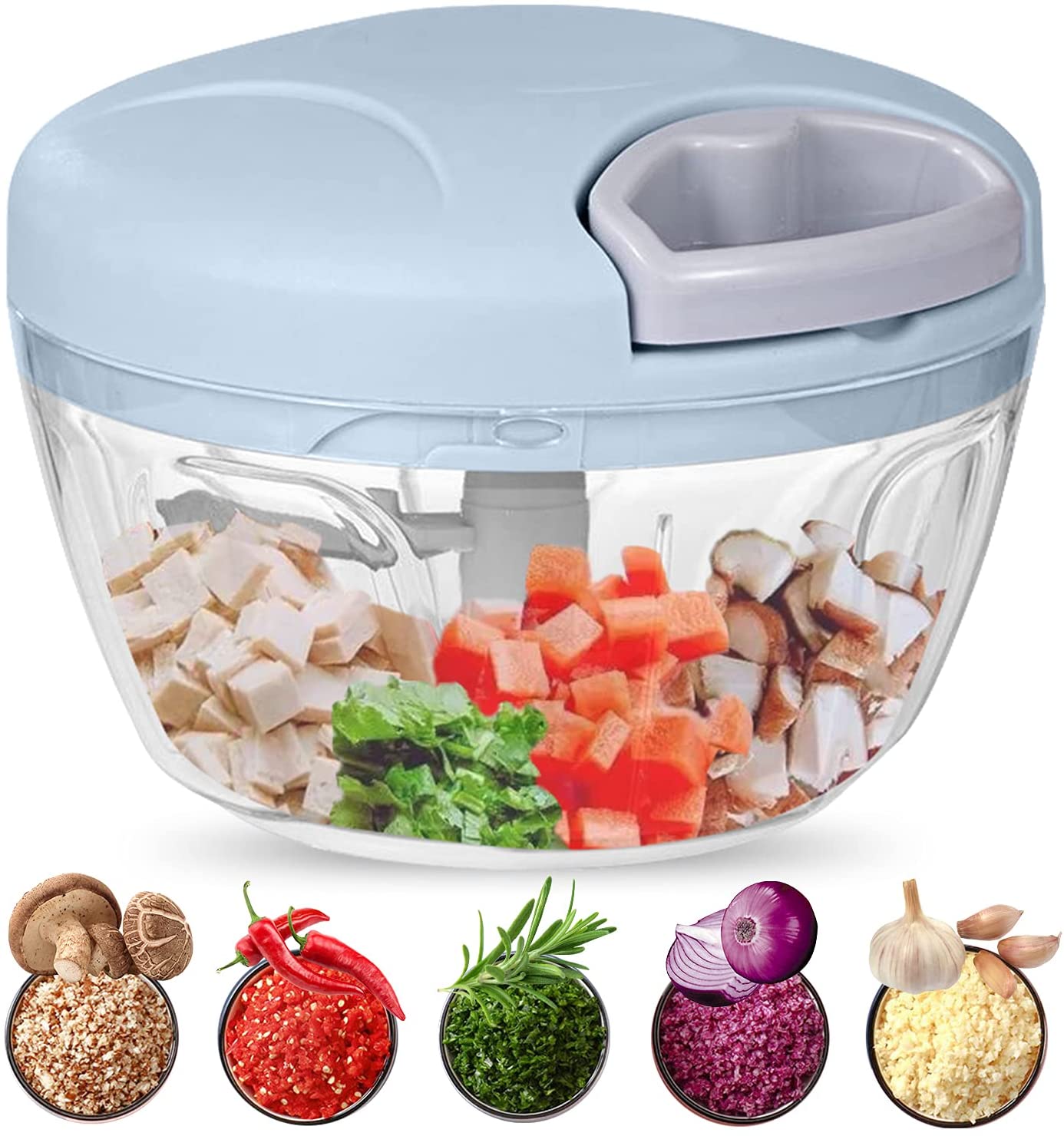Last Updated on July 27, 2023
Welcome to our article on the topic of dicing vegetables in a food processor. Whether you’re a seasoned chef or a novice in the kitchen, this guide will provide you with valuable insights and tips to help you achieve perfectly diced vegetables every time. But first, let’s start by understanding what a food processor is. A food processor is a versatile kitchen appliance that can perform a variety of tasks, including chopping, slicing, and dicing. In this article, we will explore the benefits of using a food processor for dicing vegetables, the steps to follow, and some common mistakes to avoid. So, let’s dive in!
What is a food processor?
A food processor is a versatile kitchen appliance that is designed to perform a variety of food preparation tasks. It is equipped with various attachments and blades that can chop, slice, shred, puree, and mix ingredients. The main components of a food processor include a motor, a bowl, and a lid with a feed tube.
- A food processor can save you time and effort in the kitchen by automating repetitive tasks.
- It can handle large quantities of ingredients, making it ideal for preparing meals for a crowd.
- It can achieve consistent results, ensuring that your vegetables are evenly diced.
- It is easy to use and clean, with most parts being dishwasher safe.
- It can be a valuable tool for individuals with limited dexterity or mobility.
Benefits of using a food processor for dicing vegetables
Using a food processor to dice vegetables can offer several benefits. Firstly, it saves a significant amount of time and effort. Dicing vegetables by hand can be a tedious and time-consuming task, especially when dealing with large quantities. A food processor, on the other hand, can quickly and efficiently dice vegetables in a matter of seconds.
Secondly, using a food processor ensures uniformity in the size and shape of the diced vegetables. This is particularly important when cooking dishes that require even cooking times, such as stir-fries or soups. By using a food processor, you can achieve consistent results every time.
Additionally, a food processor can handle a variety of vegetables, including those that are difficult to dice by hand, such as onions or carrots. This versatility allows you to experiment with different recipes and ingredients, expanding your culinary repertoire.
In conclusion, using a food processor for dicing vegetables offers numerous benefits, including time savings, uniformity, and versatility. It is a valuable tool for any home cook looking to streamline their meal preparation process.
Steps to Dice Vegetables in a Food Processor
Dicing vegetables in a food processor can be a quick and efficient way to prepare ingredients for your favorite recipes. Here are the steps to follow:
- Choose the right blade: Most food processors come with a variety of blades, including a slicing blade and a chopping blade. For dicing vegetables, you’ll want to use the chopping blade.
- Prepare the vegetables: Wash and peel the vegetables as needed. Cut them into smaller pieces that will fit into the food processor’s feed tube.
- Load the food processor: Place the vegetables into the food processor’s bowl. Make sure not to overcrowd the bowl, as this can affect the consistency of the dice.
- Pulse the food processor: Start by pulsing the food processor a few times to chop the vegetables into smaller pieces. Then, continue pulsing until you achieve the desired dice size. Be careful not to over-process, as this can result in a mushy texture.
- Empty the bowl: Once the vegetables are diced to your liking, remove them from the food processor’s bowl and transfer them to a separate container.
By following these steps, you can easily dice vegetables in a food processor and save time in the kitchen. Happy cooking!
Tips for achieving the desired consistency
- Choose the right blade: Different blades in a food processor can give you different results. For dicing vegetables, it is recommended to use a chopping blade or a slicing disc.
- Size of the vegetables: Cut the vegetables into smaller pieces before putting them in the food processor. This will ensure that they are evenly diced.
- Pulse instead of continuous processing: Instead of running the food processor continuously, pulse it a few times. This will help you control the consistency and prevent over-processing.
- Don’t overcrowd the food processor: Make sure not to overload the food processor with too many vegetables at once. This can result in uneven dicing and may strain the motor.
- Check the consistency: After pulsing the vegetables, open the food processor and check the consistency. If the pieces are too large, pulse a few more times. If they are too small, remove them and adjust the processing time for the remaining vegetables.
Common Mistakes to Avoid When Dicing Vegetables in a Food Processor
- Not choosing the right vegetables: Some vegetables are better suited for dicing in a food processor than others. Hard vegetables like carrots and potatoes work well, while soft vegetables like tomatoes may turn mushy.
- Overloading the food processor: It’s important not to overload the food processor with too many vegetables at once. This can result in uneven dicing and may strain the motor.
- Not cutting vegetables into smaller pieces: Before placing the vegetables in the food processor, it’s essential to cut them into smaller, manageable pieces. This ensures that they are evenly diced and prevents the food processor from getting jammed.
- Using the wrong blade: Different food processors come with different blades for various functions. When dicing vegetables, it’s crucial to use the appropriate blade for the best results.
- Processing for too long: Overprocessing the vegetables can lead to a puree-like consistency instead of diced pieces. It’s important to pulse the food processor in short bursts to achieve the desired consistency.
- Not checking the consistency: It’s essential to check the consistency of the diced vegetables during the process. This allows you to adjust the processing time and prevent over or under-dicing.
By avoiding these common mistakes, you can ensure that your vegetables are perfectly diced using a food processor.
Alternative methods for dicing vegetables
While using a food processor is a convenient and efficient way to dice vegetables, there are alternative methods that can be used as well. These methods may require a bit more time and effort, but they can still yield great results.
1. Knife and cutting board
The traditional method of dicing vegetables involves using a sharp knife and a cutting board. This method allows for more control and precision, as you can manually adjust the size and shape of the dice. It may take some practice to master the technique, but with time, you can become proficient in dicing vegetables by hand.
2. Mandoline slicer
A mandoline slicer is a kitchen tool that can be used to slice vegetables into uniform pieces. While it may not give you the exact dice shape, you can still achieve consistent and evenly sized slices. You can then stack the slices and cut them into cubes to create a diced effect.
3. Vegetable chopper
A vegetable chopper is a device specifically designed for dicing vegetables. It typically consists of a grid of blades that you can push the vegetables through, resulting in evenly diced pieces. This method can be quicker than using a knife and cutting board, but it may require some additional cleanup.
Ultimately, the method you choose for dicing vegetables will depend on your personal preference and the tools you have available. Whether you opt for a food processor, a knife and cutting board, a mandoline slicer, or a vegetable chopper, the key is to practice and experiment to find the method that works best for you.
Comparison between dicing vegetables by hand and using a food processor
When it comes to dicing vegetables, there are two main methods that people commonly use: doing it by hand or using a food processor. Both methods have their pros and cons, and it ultimately depends on personal preference and the specific needs of the recipe.
Dicing vegetables by hand allows for more control and precision. It gives you the ability to customize the size and shape of the dice according to your preference. However, it can be time-consuming and requires good knife skills to achieve consistent results.
Using a food processor offers convenience and speed. It can dice vegetables in a fraction of the time it takes to do it by hand. This is especially useful when you need to dice large quantities of vegetables. However, the downside is that the results may not be as uniform as when dicing by hand, and there is a risk of over-processing the vegetables.
In conclusion, both methods have their advantages and disadvantages. It ultimately comes down to personal preference and the specific needs of the recipe. Whether you choose to dice vegetables by hand or use a food processor, the most important thing is to achieve the desired consistency and ensure that the vegetables are evenly diced for a delicious and visually appealing dish.
Conclusion
In conclusion, using a food processor to dice vegetables can be a time-saving and efficient method. It allows for quick and consistent results, especially when dealing with large quantities of vegetables. The food processor’s sharp blades and powerful motor make it easy to achieve the desired consistency, whether it’s finely diced or coarsely chopped.
However, it is important to keep in mind that using a food processor may not be suitable for all types of vegetables. Some vegetables, such as tomatoes or cucumbers, may become too watery or mushy when processed in a food processor. In such cases, it may be better to dice them by hand.
Additionally, it is crucial to follow the proper steps and tips to ensure the best results when using a food processor. This includes selecting the right blade, pulsing the vegetables instead of continuously processing them, and not overfilling the food processor.
Overall, a food processor can be a valuable tool in the kitchen for dicing vegetables. It offers convenience, speed, and consistency, making it a popular choice for many home cooks and professional chefs alike.
Wrapping it Up: The Benefits of Using a Food Processor for Dicing Vegetables
After exploring the various methods and techniques for dicing vegetables, it is clear that using a food processor offers numerous benefits. Efficiency is one of the key advantages, as a food processor can dice vegetables in a fraction of the time it takes to do it by hand. Additionally, the consistency achieved with a food processor is unparalleled, ensuring that each piece is evenly diced.
However, it is important to keep in mind a few tips to achieve the desired consistency. Firstly, make sure to cut the vegetables into smaller pieces before placing them in the food processor. This will ensure that they are evenly diced. Secondly, avoid over-processing the vegetables, as this can result in a mushy texture.
While there are alternative methods for dicing vegetables, such as using a knife or a mandoline, a food processor remains the most efficient and consistent option. The time-saving and consistent results make it a valuable tool in any kitchen.
So, next time you need to dice vegetables, consider using a food processor for a quick and effortless experience.
Learn how to dice vegetables in a food processor and enjoy the benefits of this efficient and time-saving method.
About The Author

Scarlett Aguilar is an infuriatingly humble troublemaker. She's always up for a good time, and loves nothing more than reading evil books and playing typical video games. Scarlett also writes for fun, and finds everything about outer space fascinating. She's proud of her work, but would never brag about it - that's just not her style.

